appeal sought in steve howards' cheney arrest case -- to release video of depositions of secret service agents: march 24, 2008
did dick cheney -- as one secret service
agent suggested (under oath) -- order two
other secret service agents, guarding dick,
to file false reports about the incident
that led to the arrest of coloradoan
steven howards? did dick?
that is what this is all about.
and, i believe this is a web-exclusive:
here is the salient portion of steven
howards' argument for access, by the
press, and public, to the videotaped
depostions of various secret service
agents. the video shows important, and
embarrrassing, contradictions in the
agents' testimony about what happened
when steven howards was arrested for
telling dick cheney, in a public place,
that he disagreed with cheney's iraq war
policies:
. . .There is a First Amendment right to disseminate information obtained in discovery absent a valid protective order. Exum v. United States Olympic Comm., 209 F.R.D. 201, 205 (D. Colo. 2002) (“[p]arties to litigation have a First Amendment right to disseminate information they obtained indiscovery absent a valid protective order”) (citing Seattle Times Co. v. Rhinehart, 467 U.S. 20, 81 L. Ed. 2d 17, 104 S. Ct. 2199 (1984)). However, Federal Rule of Civil Procedure 26(c) provides that a “court may, for good cause, issue an order to protect a party or person from annoyance, embarrassment, oppression, or undue burden or expense. . .” Fed.R.Civ.P. 26(c). The burden is on the party seeking a protective order to establish that good cause exists for the disputed information to be treated as confidential. Cook v. Rockwell Int'l Corp., 935 F. Supp. 1452, 1467 (D. Colo. 1996). It is well established, and duly noted by Magistrate Judge Shaffer during the March 11, 2008 hearing, that the party seeking a protective order cannot meet the burden of showing “good cause” by making conclusory or stereotypical assertions. Exhibit A, Hearing Tr. 34:25 – 35:3 (acknowledging that the general rule for showing good cause requires more than conclusory assertions); Exum v. United States Olympic Comm., 209 F.R.D. 201, 206 (D. Colo. 2002) (“the party seeking a protective order must show that disclosure will result in a clearly defined and serious injury to the party seeking protection”); Anderson v. Cryovac, 805 F.2d 1, 7 (1st Cir. 1986) (holding that good cause must be based on a specific factual demonstration of potential harm, not on conclusory statements); Joy v. North, 692 F.2d 880, 894 (2nd Cir. 1982) (finding “naked conclusory statement[s]” of alleged injury fall “woefully short of the kind of showing which raises even an arguable issue as to whether it may be kept under seal”); Cipollone v. Liggett Group, Inc., 785 F.2d 1108, 1121 (3rd Cir. 1986) (“[b]road allegations of harm, unsubstantiated by specific examples or articulated reasoning, do not satisfy the Rule 26(c) test) (internal citations omitted); United States v. Garrett, 571 F.2d 1323, 1326, n. 3 (5th Cir. 1978) (requiring “a particular and specific demonstration of fact as distinguished from stereotyped and conclusory statements”); General Dynamics Corp. v. Selb Mfg. Corp., 481 F.2d 1204, 1212 (8th Cir. 1973) (same). “Instead, the party seeking a protective order must show that disclosure will result in a clearly defined and serious injury to the party seeking protection.” Exum v. United States Olympic Comm., 209 F.R.D. 201, 206 (D. Colo. 2002). Indeed, Magistrate Judge Shaffer specifically acknowledged that “[g]ood cause is established by a showing that the disclosure will cause a clearly defined and serious injury.” Hearing Tr. 37:4 – 7 (quoting Hobley v. Burge, 225 F.R.D. 221, 224 (N.D. Ill. 2004)) (emphasis added).
Despite the recognition of the “legal context” in which protective orders may be granted, the Magistrate Judge simply abandoned the requirements set forth in that context. Exhibit A, Hearing Tr. 34:25 – 35:4 (stating that the legal context in which the court is to decide motions for protective order requires more than conclusory and stereotypical assertions of good cause); Exhibit A, Hearing. Tr. 39:7 – 9 (“[t]o require the moving parties to come in and make that kind of particularized showing would be virtually impossible”); see also, Brown and Williamson Tobacco Corp. v. Federal Trade Comm’n, 710 F. 2d 1165, 1177 (6th Cir. 1983) (“having ‘supervisory power’ or ‘discretion’ to deny access to documents does not, however, imply that the District Court operates without standards”). Instead, Magistrate Judge Shaffer relied on speculative notions that some hypothetical computer-savvy movie-maker may decide to edit or splice the videos in such a way as to embarrass the deponents. The Magistrate Judge stated that:I believe that the potential for distortion of these videotapes is sufficiently real that to require a “highly particularized showing of good cause” to be virtually impossible, since none of us know how widely these tapes would be disseminated, since none of us know who would ultimately have access to these tapes, and certainly none of us have the ability to evaluate or anticipate the motivations that may trigger the use or potential distorted use of these videotapes.
Exhibit A, Hearing Tr. 38:17 – 39:1. These concerns are nothing more than conclusory and stereotypical statements that could be made in any case involving any type of evidence—precisely the conclusions the relevant case law prohibits. Written transcripts could be altered, still photographs distorted, and video clips could always be edited and spliced. Such speculative harms simply do not justify a deviation from the well-settled requirement of making a particularized showing of good cause.
In particular, the mere potential for embarrassment alone does not warrant a protective order. Daines v. Harrison, 838 F. Supp. 1406, 1408 (D. Colo. 1993) (C.J. Nottingham) (finding that “an effort to avoid embarrassment or harm to the reputation of the parties” is “certainly not a compelling reason to grant a confidentiality order”) (citations omitted); see also, Cipollone v. Liggett Group, Inc., 785 F.2d at 1121 (“because release of information not intended by the writer [or speaker] to be for public consumption will almost always have some tendency to embarrass, an applicant for a protective order whose chief concern is embarrassment must demonstrate that the embarrassment will be particularly serious”); Hawley v. Hall 131 F.R.D. 578 (D. Nev. 1985) (finding that the modest potential for embarrassment to the defendants did not rise to a level sufficient to establish just cause); Flaherty v. Seroussi, 209 F.R.D. 295, 299 (N.D.N.Y. 2001) (finding that “some level of discomfort or even embarrassment” is not sufficient to establish good cause for a protective order). Yet this appears to be precisely the reason for the court’s ruling. The Magistrate Judge did not cite to any specific reasons as to why a protective order is warranted in this case, apart from the speculative embarrassment caused by potential distortion of the videotaped images on the Internet. Indeed, it is entirely unclear how a videotape of a deponent giving an eyewitness account of an alleged assault on the Vice President of the United States would cause anyone any embarrassment. Clearly, the public has a great interest in hearing about how an alleged crime committed against the Vice President allegedly occurred.
Furthermore, the thrust of the moving parties argument was that their images mightbe embarrassingly distorted by someone seeking to vent their frustration at the Vice President. OVP’s Motion for Protective Order [83], page 13. However, the deposition video would provide no more exposure to the possibility of ridicule based on their association with the Vice President, than any other photograph, image or statement made by the deponents at any time during their employment with the Office of the Vice President. In Daines v. Harrison, 838 F. Supp. 1406 (D. Colo. 1993), Chief Judge Nottingham refused to enforce a protective order because the parties’ desire to avoid embarrassment or harm to their reputation was simply “not a compelling reason to grant a confidentiality order.” Id. at 1408. The court expressly noted that the parties had not “demonstrated even one specific interest favoring confidentiality.” Id. (emphasis added). Specifically, the court noted, there were “no trade secrets, potentially defamatory material, or threats to national security” involved in the case that would have warranted a protective order. Likewise, in the present case, there is no similar such matter warranting a protective order. The videotaped testimony in this case is based on individuals’ perceptions of an entirely public incident. . .
. . .The court specifically stated that “it is important to remember that what is at issue here is the assertion of a constitutionally-protected privilege.” Id. In this case, however, no constitutionally-protected privileges are implicated. Rather, the only material that could be edited and spliced involves observations and demonstrations of what the deponents observed in a public place on a matter of great public concern – an alleged attack on the Vice President of the United States. . .
. . .Likewise, in Stern, the court based its decision to grant a protective order on very specific examples unique to the moving party in that case, including particular websites focusing on the case, including one that had a running poll about whether the moving party should be arrested for witness tampering. Stern, 2007 WL 4328783, at *5. Here, there is no such frenzy. There are no sex scandals involved, no celebrity drug use revealed, and no affairs alleged. The fact that this case is newsworthy hardly amounts to a “frenzy.” In particular, what readily distinguishes the Stern case from the present one is that while Stern involved issues that may well have been in the public interest, it did not involved matters of public concern. . .
. . .This is a case about possible cover-ups and misconduct engaged in by the federal government. It is alleged in the Complaint that Steve Howards was arrested for criticizing the Vice President’s policies in Iraq. In the depositions, different Special Agents of the United States Secret Service are seen accusing one another of lying under oath and filing false reports. Indeed, there is speculation by one agent that the Vice President may have ordered two of the agents to file false reports.
There is an overwhelmingly strong interest in providing the public with the information necessary to make informed judgments about activities engaged in by Defendants and the OVP. The videotapes provide physical demonstrations as to what allegedly happened on June 16, 2006, leading to Plaintiff’s arrest and threat of indictment. The mere speculation that these tapes could be cut and spliced on the Internet certainly does not outweigh the strong interest in governmental transparency and accountability. More importantly, and crucial to the issue presently before this Court, the mere potential that the moving parties could be embarrassed by unflattering editing (which, at this point, is purely speculative) simply fails to meet the burden of showing a particularized showing of good cause. . .
While the existence of the Internet is a “practical reality,” it does not change the burden that the moving parties must meet according the Federal Rules of Civil Procedure and the corresponding caselaw. . .
all of the above is from a motion appealing
a federal magistrate's order to prevent public
dissemination of deposition video-tapes.
it is time we knew the truth.
will the colorado federal district
court trial judge -- wiley y. daniel -- agree?
we'll soon see.


































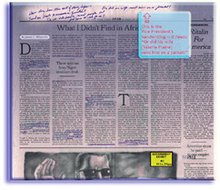





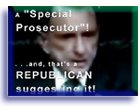













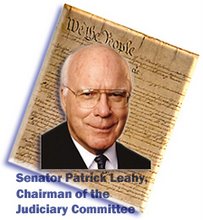

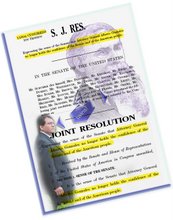
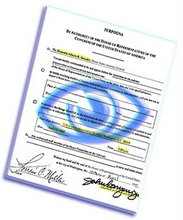




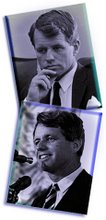





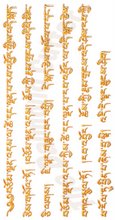
1 comment:
CC of what:
XXXX Sent to an American: F/ XXXX
That Steve Howards, guy would have been better off to take piano lessons from ****, rather than going to Beaver Creek. see below:
(off the WWW) sets background:indict dick cheney: appeal sought in steve howards' cheney arrest case -- to release video of depositions of secret service a..
Howards was in Beaver Creek because his kids were at piano camp. He arose that morning to the latest reports of U.S. and Iraqi casualties, prompting him to muse, "What a catastrophe this is."
While walking his older son, Koby, to a piano class, he noticed a small crowd on the mall. At its epicenter was Vice President Dick Cheney. At the time, Howards didn't know that Cheney was in town to attend a conference sponsored by former President Gerald Ford. Most of the people in the crowd seemed awed.
Howards was not. During his tenure as a lobbyist for the National Wildlife Federation in Washington, D.C., he had seen a lot of big-shot politicos close up.
......
Irving Howards was a professor of political science, and as he moved his wife and kids around the Midwest, one constant theme around the dinner table was that this is a free country; make your voice heard
...............
He knew my parents would be upset (by a lawsuit)," says Semuels, a dean at the Tufts University Medical School in Boston. "But he felt serious freedoms were involved."
From boyhood protest to taking on Cheney : Local News : The Rocky Mountain News
>>>>>> THE POINT:
When >>>>>>>) contacted*** Al Simpson on Tea Pot Dome/ <>>>*** matter, he exploded, threatened to sue us, have us investigated by some "Special Senate Counsel", with other threats to beat up ****, and more.............(left on TAPE--, phone answering machine )
The contacts by me(etc) were by letter.
I have never met Simpson, never spoke to him personally. Never been in the same room with him, never went up face to face and asked him (anything)
If I had confronted Simpson in person would he make up some lie that this ****** guy was carrying a baseball bat, with 8 inch nail spikes, and threatened to break every bone in his face, etc etc..., had on a Hat that looked like he just came from an Irish parade.
This Simpson-Cheney lie machine(utter fabrications, and audacious lies) is the biggest phony bunch of cowards that have come down the pike in a long time
Mr Simpson was not met with any threats, he was at a lost to explain the situation at Tea Pot Dome, and contacts with ******, and the situation surrounding Tea Pot DOME, and NPR.
Mr Simpson was not a sitting U S Senator, when he was contacted, he acts like he was the KING of Wyoming, and was going ballistic some one even contacted him on the matter.
Since then I have discovered more, which may set him off to go insane....
<>>>>>>>>>> Since the Schaffer err prone Magistrate ruling, it has been over-ruled by a Federal Judge, ruling in Feb 2009, that Cheney must submit to a sworn Deposition..
The reason the above is posted is because there is a pattern of lies by this Cheney Cabal.
Cheney was the Chief protector of illegal criminal misconduct in the Iran-Contra mess, how he endeared himself to the Bush inter-circle.
Fishy stuff was going on Navy Petroleum Reserves to skim off oil Revenue to fund the Contra follies, possibly, never properly investigated, by Congress as that is where this Executive as King thing took flight.
When contacts were made with Cheney's Pal and head spinmeister Alan Simpson, a fury of Simpson going bonkers was in full display.
It is only the tip of the iceberg.
Now Cheney must stand and raise his right hand and swear to tell the truth.
The law firms representing the SS are acting unethical.
The bogus charges were dropped by the Eagle county D A .
Some private law firm representing the SS ar not D A's, but when Cheney is involved so much gets twisted.
YOU need to up date your WWW site, to make it current as to 2009, and please do.
Just thought to drop a note, I hope you wil understand I am not leaving me name in view of threats of Al Simpson, which are predicated on lies, and games.
But, we are Americans, we served America, we pay taxes, we vote, we
keep informed, we are observing, reading the news, we take our citizenship seriously.
And, we are posting this in hopes you realise that we are tired of Cheney treating Americans as some dog to kick, and beat, and, we are not amused he ducked the draft 5 Times in Wyoming during Nam.
We have not forgotten that.
We wish you well, Mr Howards, we applaud you staning up to seek to protect the U S Constitution.
Post a Comment